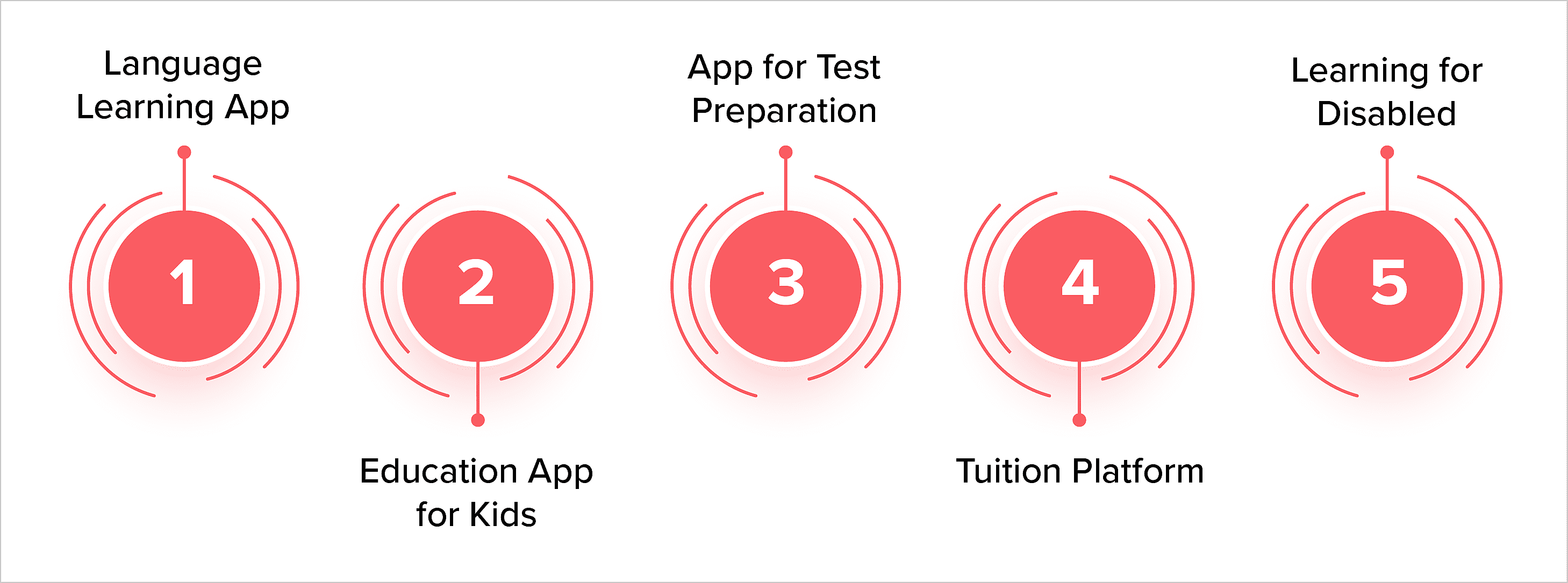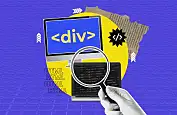
Post Covid-19, there has been a surge of people choosing to learn skills online. Catering to these needs, various app creators saw a potential market for elearning or education apps. These education apps are helping people learn new languages, tech skills, clear competitive exams, attain diplomas & degrees, etc.
However, the first step is to establish the cost of developing an education app, for your app idea. Therefore, to further dive deep into the topic…read ahead!
Market Statistics of Education App

With numerous applications catering to aspiring students, the edtech market is booming. In a report by Technavio, the estimated growth of the education app market is suggested to be $12.478 billion between the years 2022-2027. The reported CAGR is 28.62%.
Trends influencing Market Growth
There are multiple trends that are affecting the growth of the market. These are:
- Focus on wearable devices that are catering to the education app market
- Enhanced communication between teacher and students
- Wearable integration with smartphones and other devices
- Capability to access multiple education apps and use them on-the-go

Types of Education Apps for Students

The spectrum of users for education apps is simply enormous. There are apps ranging from toddlers to professionals and even people who are willing to acquire skills in their old age.
Below, we have mentioned the segments into which these apps can be divided:
- Language Learning Apps: Language learning apps are amongst the most popular and profitable niches for educational app development. It allows the user to learn any language from the comfort of their home and in several languages of their interest. Reported by Business of Apps, the language learning app market created $8.21 billion dollars in the year 2021. Adding to it, “Duolingo”, one of the top apps for education that is helping people learn multiple languages of the world made around $250 million alone in 2021.
- Educational Apps for Kids: As the name suggests, these kids' learning apps are created for children to learn while experiencing fun. A 2021 Statista report states the highest average time spent on a gaming learning app called “Kahoot” was 16 minutes. This statistic was followed by other apps as well - Duolingo, Quizlet, Photomath, etc.
- Apps for Test Preparation: There are several entrance tests that students have to qualify for entrance to their intended college or scholarship. For example, SAT, TOEFL, ACT, etc. To help students with that, test preparation apps came into being. These apps assist students and help them prepare for their exams in a systematic way. Some examples of test preparation apps are Exam Countdown, My Study Life, Quizlet, etc.
- Tuition Platforms: Online tuition platforms allow distance tuition for students that require additional help. These apps work as a mediator and establish communication between students and teachers. Some commonly used tuition apps are Chegg Study, Princeton Review, Skooli, Tutapoint, etc.
- Learning for Differently-Abled: Multiple students around the world who are differently-abled struggle to accommodate themselves in an orthodox educational setting. It is because the majority of the time, the school infrastructure isn’t equipped well with resources to help them. However, there are multiple apps that are doing this such as Speech Blubs, Voca Quest, Clicker Docs, etc.
Steps and Cost of Developing an Education App
To understand the mobile app development cost for an education app, here are the steps and the learning app development cost associated with it.
1. Decide on the Type of App to Create/App Idea

Before thinking about the cost of developing an education app, it is important to think about what to create. The market has unlimited substandard applications that don't really serve a purpose. Think about the type of application you would like to create. After that, think about these questions:
- How can I make my app stand out?
- What is the learning process of my app?
- Is my app idea truly lucrative enough to stimulate adopters and loyal users?
Once you start thinking from this perspective, your education app ideas get more polished with the capability to fill up necessary gaps.
Associated educational app development cost:
The ideation process of an app idea doesn’t cost anything unless a research firm is hired to do the same.
2. Research Market and Look for the Competition
Once the type of education app to develop has been established, it is now time to research the market. The idea behind this step is to understand the target market, the demographics, and the competition.
This research can be carried out independently, or one can hire a research team for the same. It is often recommended to use a research team if it's for the market and within the budget.
Here are some tips, if you wish to conduct research independently:
- Search for the best apps in the niche picked
- Figure out the top-rated application
- Read the reviews written by the users on the app store
- Use the applications personally, and figure out what more can be added
To research for the target market, there are various market research websites that can be checked out. For example, Exploding Topics, Buzzsumo, Hootsuite, etc. These websites will help you determine the target market, demographics, relevant keywords, competitor analysis, etc.
Associated cost to create educational app:
Cost of Hiring a Research Firm: $20,000 to $50,000 (in-depth research & market analysis)
Subscription of Research Platforms: Starts from $39/per month billed annually (for basic pack)
3. Think about the App Features

The idea behind establishing e-learning app development cost is to figure out the budget for an app that makes learning more interactive and immersive. Establishing an app idea and whether it is lucrative enough or not is one thing, however, the real task is to make your app stand out. To make that happen, your education app would require features that stimulate the user to learn more and spend more time on the app.
To get you a general idea, here are some must-have features over which you can brainstorm features to make your app stand out:
- Content Management System
An educational app is basically content served in an interactive manner. With so many files of different formats that include images, audio, text, and videos, it is important to have a content management system that can sort, segregate, upload, delete, and store it well for use.
- Gamification of the Learning Process
Teaching with the help of games is one of the best ways of learning. Gaming in a way defines the word interactive. Creating a point-based system with achievement to share would compel users to level up.
To truly gamify the learning process and create a proper education app development cost breakdown, here are some things you can add: points, achievements, leaderboard, levels, rankings, etc., and figure out the associated cost.
- Quizzes with Hints
Creating quizzes as a side task to gain more points and experience is another great feature. It helps the user assess his/her own capabilities and progress. Integrating hints are helpful considering they help users to solve problems when they are incapable of.
It is important because people often get disheartened after not being able to move forward, and simply quit the progress. However, hints can help them move forward whenever they are stuck carrying on with their progress. Another great feature that can be applied on top of this would be to give hints, just like points after the completion of modules. It would enable the user to think that they have earned the hints, and are simply not there to be there.
- Push Notifications
A great example of this would be Duolingo. Duolingo uses streak to compel its user to use the application more. To achieve that they have created push notifications that would pop up if the user hasn’t completed his daily module. Everyone wants to progress further, however, just in case they forget about it, one needs a gentle reminder.
- Dashboard for Students and Teachers
It is important to have a dashboard for both teachers and students. The student dashboard can be created with minimal elements that describe the points acquired, achievements unlocked, and other things.
On the other hand, the teacher would also require the capability to upload, update, or delete data. A dashboard is a place where the user can manage their own data created during the process of learning and teaching.
- Social Media Integration
A lot of people like to tell the world about their progress in a particular subject area. By providing social media, not only are the users sharing their progress with the world but also marketing your application.
There are many other features that can be integrated. However, the important point is to create a consistent experience and provide features that are worthwhile to the user.
Associated educational app development cost:
Average Hourly Rate in India: $25
Average Hourly Rate in the USA: $50
For instance, let’s say:
Time taken for developing single feature = 40 hrs
Number of features added = 10
Total time taken = 400 hrs
Cost of feature development in India = 400*25 = $10,000
Cost of feature development in USA = 400*50 =$20,000
Note: The cost of developing an education app would depend on the complexity of the app. The cost mentioned above is simply a general estimation.
4. Brainstorm a Compelling UI/UX Experience
With an educational app, the UI/UX experience is everything. To create an interactive experience, an elearning app development cost associates too many design elements. These design elements are visual cues that are self-explanatory. In fact, having a mascot that pops up once an achievement is unlocked is also something that creates an immersive experience for users.
Here are some ideas that can be fruitful while developing the UI/UX:
- Consistent flow of navigation
- Predefined color palette with colors representing the brand
- Animated design elements
- Logos, etc.
Associated educational app development Cost:
Typical Price Range of Designer: $18-$40/per hour
Hours Spent on Creating Design: 100 hrs
Total Cost in Lower Range: 18*100 = $1800
Total cost in Upper Range: $40*100 = $4000
5. Fix the Tech Stack and Get to Work!

Procuring the right tech stack is important. With so many design elements and complex features, it becomes important to choose something that can help you turn your dream into a vision.
A tech stack can be divided into three layers i.e.-
- Front-end
Front-end is the UI part of an application. The tools & frameworks used for front-end are based on three different technologies HTML, CSS, & Javascript. Some common examples of front-end frameworks are React, Vue.js, Angular, etc.
- Back-end
The back-end of an application is the coding part that makes the app functional. Back-end is responsible for operations such as read, write, delete, update, etc. Some of the top front-end frameworks are Django, laravel, asp.net, etc.
- Middleware
Middleware is the part that combines the upper two layers i.e., front-end and back-end. Some common examples of middleware frameworks are Jboss EAP, Oracle Fusion, Microsoft Biztalk Server, etc.
Associated educational app development cost:
The majority of popularly used front-end & back-end frameworks are open-source technologies, thereby, free to use for anyone.
Middleware Subscription Cost: Starts from $8000/per year
Note: The cost of implementing a middleware framework depends on various factors such as the number of users, number of services handled, implementation & maintenance cost, etc.
6. Time to Assure Quality/Testing
Once all the features and the design elements are aggregated, it is time to test it out. Testing an application beforehand helps in understanding the bugs and improvements to make in the UX. There are various types of testing methods that can be used such as:
- Unit Test
- Integration Test
- Functional Test
- Acceptance Test
- Smoke Testing, etc.
Aside from that, a lot of app creators do beta testing on their applications. In beta testing, a beta version is launched for people to check out. Once that is rolled out, the number of mistakes, suggestions, and bugs reported by users is taken seriously. It is constructive criticism that elevates the value of your application.
Associated educational app development cost:
Average hourly wage of Testers: $25/per hour
Time taken: 50 hrs
Cost Accrued: 25*50 = $1250
7.Finally! The Launch is here!

At this stage, it is time to submit your application to the platforms it has been created for. There are primarily two app stores that bring the most amount of revenue i.e., the iOS store and the Google Play Store.
Once submitted, the created app would be reviewed based on pre-fixed guidelines. If these guidelines are met, the app will be published in the store.
Associated educational app development cost:
iOS Store: $99 annually
Google Play Store: $25 (one-time)

Other factors that add to the cost of making an educational app
- Platforms: Cost of Natively developed iOS and Android apps are similar. A cross-platform starts from $12,000 to the higher end (depending upon the complexity)
- Cost of Servers: Starts from $1200-$20,000 and more per year (depending upon the scale)
- Maintenance cost: $400-$900/year
- Updates: $1000-$5000/year and more (depending upon the complexity of features)
- Design Updates: $500-$5000/year and more (depending upon the complexity and design changes)
Wrapping Up!
The market for education apps is on the rise. Figuring out the cost of developing an education app is the first move to turning a vision into reality. A good education app has the capability to replace orthodox ways of learning. It has the potential to make learning fun and much more immersive for the users.
These apps provide a structured way of learning and compel its user to push the limit. These education apps unlimits the old school way of learning and motivate its user to aggregate more skills.
If you are looking for a list of the top education app development companies to get help with your edtech app, here is a list curated for you to start your journey.
We hope this article may have provided you with a baseline understanding of creating an education app. For similar content, check out other blogs from MobileAppDaily.
Frequently Asked Questions
-
How much does it cost to make an education app?
-
How to create an education app?
-
How much does mobile app development cost?




















